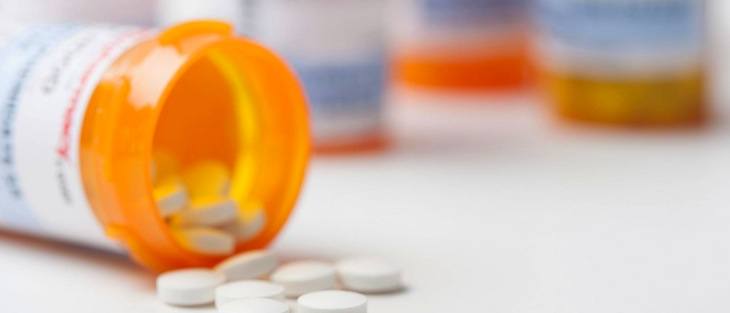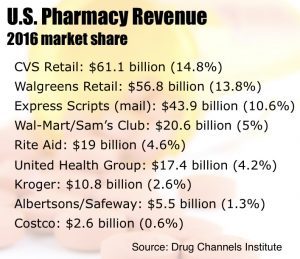Prescription drug costs remain high thanks in part to specialty drugs
by November 15, 2017 1:16 pm 547 views

Consumers who rely on prescription drugs could pay more than necessary given the wide discrepancy in pricing between pharmacies. Healthcare advocates encourage consumers shop around when it comes to filling prescriptions.
While it may only cost pennies to manufacture some generic drugs, pharmacies and pharmacy benefit managers who sit between the manufacturer and consumer can add significant costs to the drug. Part of that stems from the fact pharmacists are required by law to physically count the pills and counsel with customers on how to take the drug which raises labor costs at the pharmacy level.
Harry Travis, pharmacist and CEO of EtectRX, said as more consumers are paying out of pocket for medications, it pays to price check and use apps such as GoodRX that do some of that work for consumers. Using the GoodRX app to price check a 30-day supply of the blood pressure medication Olmesartan (generic for Benicar) there are wide swings in costs. The medication ranges in price from $25.90 at Target, $32.97 at CVS, $80.02 at Wal-Mart, and $92.78 at Walgreens for a 30 days supply of 40 milligram tablets.
The generic blood thinner Plavix (Clopidogrel for 30 days) ranges in price from $4 at Wal-Mart, $10 at Sam’s Club, $18.54 at Target, $22.49 at CVS and $25 at Walgreens, according to the GoodRX app.
Travis said the disparity in cost is the result of a massive industry out of balance. Travis, who spoke recently at the Northwest Arkansas Technology Summit, said prescription drugs comprise 10% of healthcare spending or $320 billion. He said generic drugs comprise about 35% of the spending, while brand drugs are 25% and speciality drugs account for 40% of the total $320 billion spend and the vast majority (90%) of that goes through 50,000 retail pharmacies.
While generic drugs represent 35% of the spend, they represent 88% of the volume. Brands carry just 10% of the volume and specialty drugs account for only 2%, despite their making up 40% of the total spend. The average cost per 30-day supply for generic drugs is $30, branded drugs is $300, and specialty drugs are $3,000 for 30-days or 100 times more on average than generic drugs. He said oral chemotherapy drugs can run as much as $5,000 per month, or $500 per day, Travis said.

He said cholesterol drug Lipitor was $7.65 per tablet in its last days as a branded drug. Within 18 months the price of the generic to 16 cents per tablet, a 98% reduction in price. He said Plavix dropped from $6.22 per pill to 12 cents, also a 98% drop in price.
Travis said some grocers such as Wegman’s are filling generic drugs for no charge because the price is so low, and the cost to process the insurance is greater than the cost of the drug. He said in some cases it may make more sense for retailers to give the drug away which pleases customers.
Wal-Mart lowered the cost of many generics to $4 in 2008. Since that time many other retailers have followed suit and Kroger in 2010 began charging just $2 for some generic prescriptions.
When asked what would make drugs less expensive for consumers overall, Travis said “more generics.” He said there are now 3,600 applications at the Federal Drug Administration.
“Last year the FDA set a record and approved 700 drugs as generic. Dr. Scott Gottlieb, FDA Commissioner, has said his short term goal is to crank that up. There is a second path to get costs down for the specialty drug proteins. You can’t have an exact copy of a massive molecule accomplished with biosynthesis but you can get something really close when the patent expires,” Travis said.
The Affordable Care Act allowed the FDA a regulatory pathway to create biosimilars. He said there have been eight biosimilars released in the U.S. and more in Europe. Travis said there has been a 30% reduction in cost for some of the specialty drugs that cost on average $3,000 per month.
